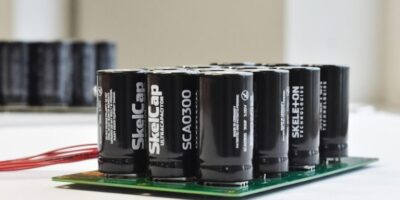Microchip has introduced a family of serial peripheral interface (SPI) EERAM devices that it says offers system designers up to 25 per cent cost savings over the current serial non-volatile RAM (NVRAM) alternatives.
Serial EERAM is a standalone serial SRAM that includes shadow non-volatile back-up. The SPI EERAM family introduces four SPI densities to Microchip’s EERAM portfolio, ranging from 64kbit up to 1Mbit.
They can be used for applications that require repetitive task data-logging and which must be able to automatically restore content if power is disrupted during processing. Target applications range from smart meters to manufacturing lines.
Current low-density (64kbit to 1Mbit) NVRAMs used for these data logs are typically the highest price-per-bit memory in the resulting end products, notes Microchip.
The EERAM standalone non-volatile RAM uses the same SPI and I2C protocols as serial SRAM, enabling devices to retain SRAM content during power loss without using an external battery. All non-volatile parts are invisible to the user. When the device detects power going away, it automatically transfers the SRAM data to non-volatile storage, moving it back to the SRAM once power returns.
In manufacturing lines, for example, stations handle up to millions of tasks over their lifetimes and lost data during a task can require overhauling or discarding items. EERAMs automatically store SRAM content in these settings, allowing the manufacturing line to resume where the task was disrupted.
The primary reason EERAM is available at a lower price point is the use of standard CMOS and flash processes. As the highest volume and most widely used processes and can offer the best reliability and lowest cost in the industry, explains Microchip.
Alternatives such as ferroelectric RAM (FRAM) use a specialty process, which results in higher costs and unstable long-term supply, argues Microchip.
This EERAM family comes with Microchip’s customer-driven obsolescence practice, which helps ensure availability to customers for as long as needed.
The 48L640 (64kbit SPI), 48L256 (256kbit SPI), 48L512 (512kbit SPI) and 48LM01 (1Mbit SPI) devices are available in eight-pin SOIC, SOIJ and DFN packages in volume production.







